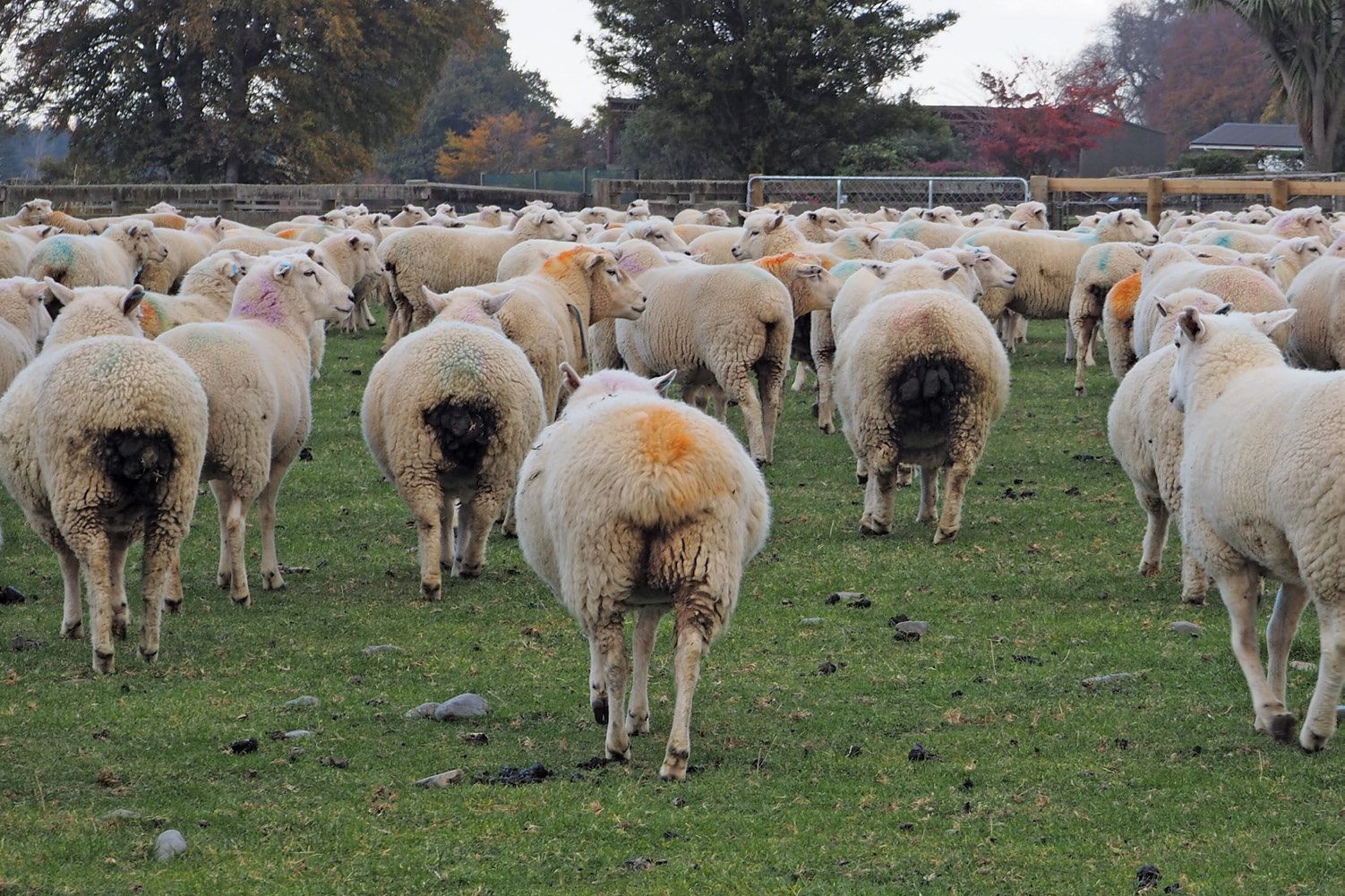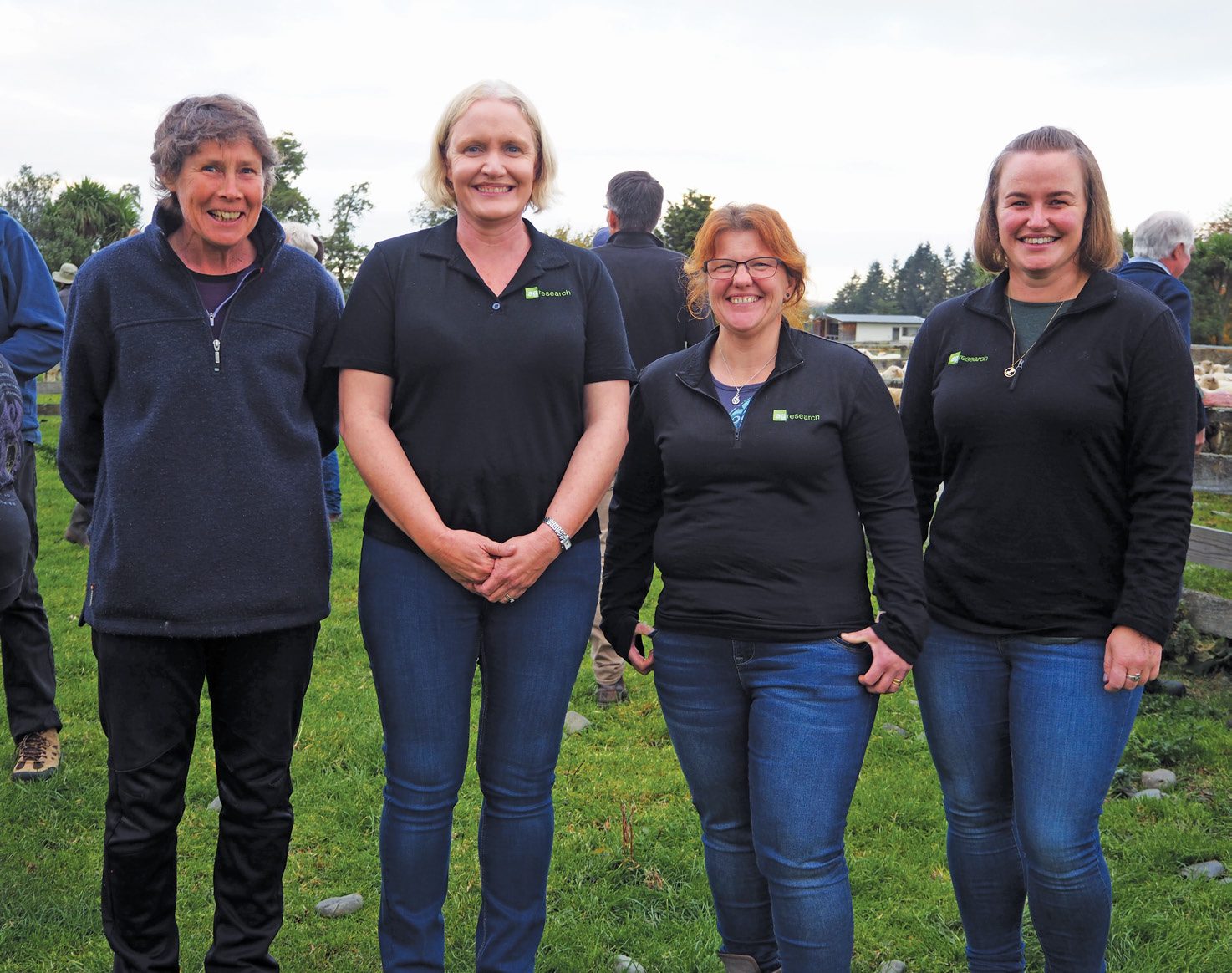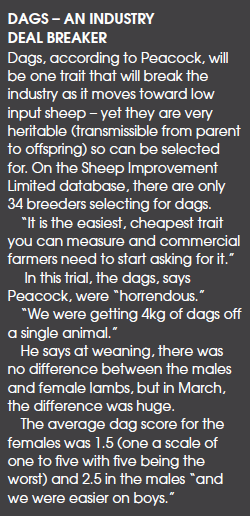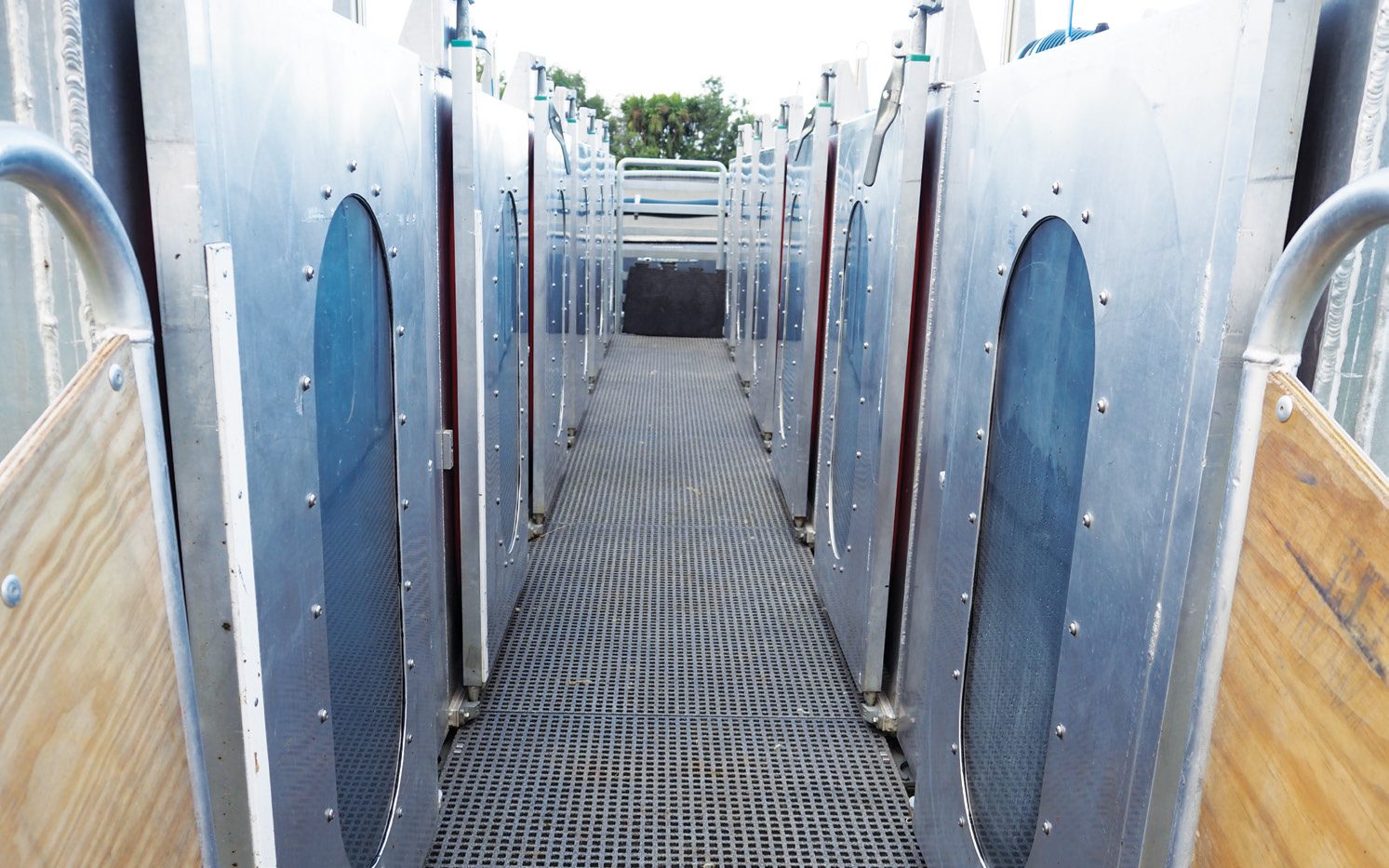Future-proofing the sheep industry
Improvements to sheep genetics could lead to a decrease in chemical treatments Sandra Taylor reports.

Imagine a world where sheep farmers were unable to use drenches, tail their lambs or dip their sheep.
This world is fast becoming a reality, as consumers increasingly seek ethically-raised lamb that is produced with high animal welfare and environmental standards and minimal chemical inputs.
To help farmers meet this market, Beef + Lamb New Zealand (B+LNZ) Genetics is running a low input sheep progeny trial to identify environmentally efficient sheep that require minimal intervention and are robust against common diseases such as internal parasite and facial eczema (FE).
This trial, which includes genetics from 16 future-focused sheep breeders, is being run on Orari Gorge Station, a 4500ha hill country farm in South Canterbury.
It is the ideal testing ground for genetics. The station is 75% tussock country, 15% lower hill with only 10% flats. Average annual rainfall is 1200mm. Owner Robert Peacock says it is wet more than it is dry, so worms are a constant challenge.
Alongside the progeny trial, Orari Gorge carries 24,000 stock units, 50% of which are sheep, 25% deer and 25% cattle.
Speaking at a recent B+LNZ Genetics progeny trial field day, Robert says another significant driver in the need for low input sheep is the shortage of farm staff.
“It’s becoming harder and harder to find staff to do the tailing, the dagging and the dipping.”
Ironically for a low input sheep trial, there is a huge amount of work involved with all monitoring and measuring which includes artificially inseminating ewes, measuring methane production as well as the standard performance and production recording associated with any progeny trial.
Peacock says he has been passionate about low input sheep farming for years and is concerned the industry as a whole doesn’t know what’s ahead of it – “or does it have its head in the sand?”
He says the steering committee for the low input progeny trial, which Peacock is part of, is wanting to encourage other stud breeders to select for traits such as worm resistance and dags to help the whole industry progress.
“But it is up to commercial farmers to be asking their stud breeder for these traits.”

Tricia Johnson, Suzanne Rowe and Kathryn McRae.
Lambs under pressure
The low input progeny trial involves 17 rams representing 10 breeds, which predominantly through artificial insemination (AI), are mating 1000 ewes.
The first cohort of lambs was born in 2019 and the third mating has just finished.
Ewes lamb unshepherded on the hill and at docking lamb tails are measured and male lambs are left untailed.
“The way the world is moving we may not be able to tail and everything changes when you leave the tails on,” Peacock says.
“You have issues with dags and flystrike.”
At weaning, weights are taken and the lambs are given a dag score, but not crutched. All lambs are drenched and dipped.
A control group of lambs is selected and while these are run with the rest of the lamb crop, unlike the others, they are drenched at regular intervals.
Without drench, the hill country lambs were growing at 140gm/day between December and May and even when pushed hard, Robert says they were still gaining 100/gm a day.
A clover crop was used to lift condition and this had positive results.
“It was a dramatic learning curve.
“We knew clover was going to be good, but it exceeded all expectations.”
In the ewe lambs, Peacock found growth rates dropped off after shearing.
“You’ve really got to be at the top of your game with low input sheep, you’ve got to get the management right when you’re cutting corners with drench.”
Testing time for ewe lambs
Over autumn and winter, the ewe lambs are shorn and fleece traits recorded. They are run through portable accumulation chambers (PACs) to measure their methane production, another heritable trait. In July and August 2021, a representative sample will be sent to Invermay where each animal is tested for residual feed intake – looking at which animal makes the most efficient and effective use of feed resources.
All ewe lambs are retained and while they had reached 40kg by May, they are not mated, although a teaser ram is run with them to identify which lambs are cycling.
Last year, 70% of the ewe lambs cycled.
In March of this year, the two-tooths weighed 67kg and Peacock says they were amongst the best two-tooths he has seen. This is despite none being culled – as would be standard practice.
Robert says genetically, there is a big difference between studs and this reflects the length of the time each stud has been focusing on traits such as worm resistance and dags.
“The genetics work, but it is a slow game, you just can’t put your drench gun away overnight.”
He says the results have shown that no one ram is good at every trait and no one breed is good at every trait.
“The more traits you select for, the slower you will go.”
Dags, for example, are heritable and breeders can move quite quickly to breed those out, but there may be a penalty with slower wool growth.
However, getting rid of dags will potentially stop flystrike and the need to dip lambs.
Peacock believes the industry would need five to 10 years notice if it were to stop tailing. “It will take a while, but it’s certainly do-able.”
While consumers are increasingly demanding lamb produced without chemicals, Peacock believes widespread drench resistance – including triple drench resistance – will force the industry into farming without the use of drenches long before regulations will.

Doing the science
Speaking at the field day were three AgResearch scientists Kathryn McRae, Suzanne Rowe and Tricia Johnson, all involved in some aspect of the low input progeny trial.
McRae talked about using genetic improvement to provide a better product for consumers produced with less impact on the environment.
“We want animals that combine production potential with resilience to external stressors, allowing for production in a wide variety of environments.”
The traits McRae focused on in her presentation were internal parasites, pneumonia and facial eczema (FE).
She says individual sheep differ in their ability to develop resistance to parasites and WormFE is a breeding value or measure of resistance to parasites. This is poorly genetically correlated with dagginess.
While faecal egg counts (FEC) are still the best proxy for parasite burdens and a tool to measure an animal’s resistance to parasites, DNA will be used in the future to look at parasite species at the same time as FECs. Scientists will also be looking at the impact of parasites on behaviour and the interaction between the faecal microbiome and internal parasites.
Pneumonia is costly
Pneumonia is found in 30-40% of all lambs at slaughter. It is costing the industry millions of dollars every year in lost performance.
McRae says it is possible to breed animals that are less susceptible to pneumonia and it appears there is possibly a positive genetic correlation between FECs and pneumonia but that has yet to be validated.
Interestingly, animals with lung lesions grow faster from birth to weaning but slower from weaning to slaughter than animals without lesions.
The heritability of a pneumonia lesion score is 0.07-0.16 which shows that genetic gains can be made.
The next step is to develop an ultrasound test as a technology to detect respiratory disease in live animals.
This production limiting disease is expected to move further south with climate change. RamGuard is the commercial testing programme for tolerance to facial eczema (FE). Tolerance to FE is heritable (0.45) and there appears to be a positive genetic correlation between FE and FEC.
Rowe outlined the work that has gone into identifying and breeding low methane producing sheep. There is an average of a 11% difference in the methane production of high and low methane producing sheep and while the team at AgResearch have measured for everything, they found no correlation between any trait except wool growth. Low methane sheep produce slightly more wool.
PAC are used to measure an individual animal’s methane production and are being used in stud flocks around the country.
“There is a lot of variation within flocks which is exciting as it means we can select low methane animals.”
Feed use efficiency heritability high
A feed intake facility was set-up at Invermay, Otago in 2015 to measure actual animal intakes and growth rates.
Johnson says over 1000 animals have been measured and a 22% difference has been found in the extreme animals in terms of how much they eat for a given live weight and growth rate. The heritability of feed use efficiency is estimated at 0.42 which is high.
“Feed is a limiting factor on every single farm operation.
“If we can identify animals and genetics which require less feed for their production outcomes then that would be very valuable.”
For the low input sheep progeny test, between 160 and 200 nine-month lambs are put through this 42-day test. They are scanned at the beginning and end for fat measurements and weighed twice a week. The feed intake of individual animals is measured.
Last year the lambs grew an average 343gm/day in the facility (fed lucerne pellets ad-lib), with a range of 148gm/day to 535gm/day.
Some lambs didn’t put on any fat, others put on a lot.
There was a 0.5kg of feed difference between the most and least efficient animal.
“There was a big difference between sires in terms of weight gain and fat with some sire lines eating significantly more feed every day and some significantly less.”
Feeding behaviour was also very heritable with highly variable intake rates. Some were eating 600gm/1000 seconds and others eating 200gm in the same time frame.
The number of feeding events also varied between 10 and 80 times /day.
“This was very repeatable for individual animals.”




